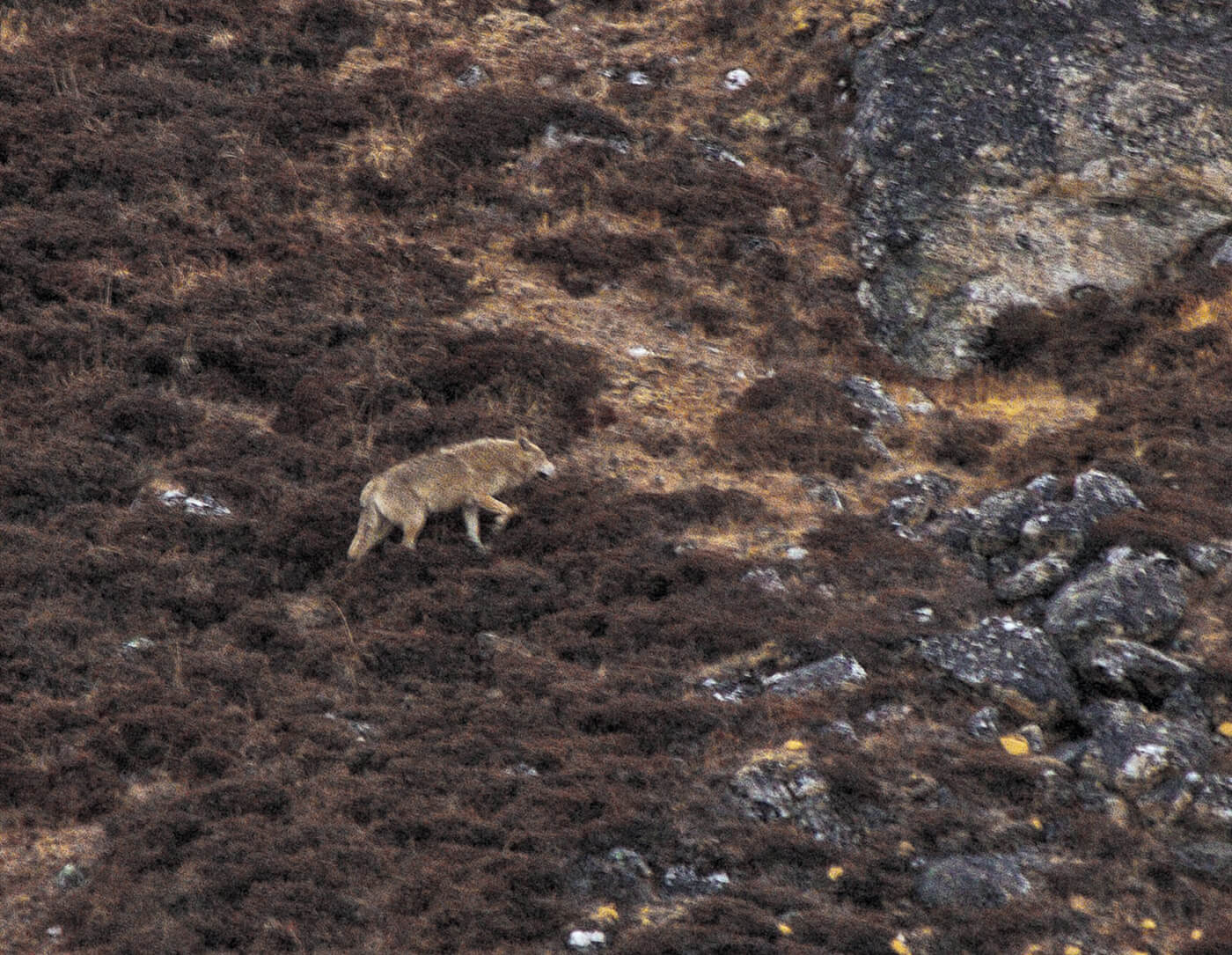Crying wolf
Rather than a threat, the Himalayan Wolf may be the saviour of a fragile ecosystem

After two months of trekking across the remote mountains of Northern Nepal in search of the elusive Himalayan Wolf, I was beginning to feel like I was chasing ghosts. But one cold morning, there they were on the ridge above me (pictured).
I was so happy I was crying. This is what I had waited so long for, and I quickly took pictures and video of the male wolf howling in the distance. I howled back, trying to talk to him. Later, he was joined by a female and an adolescent on the slope.
Himalayan Wolf sightings are rare. Zoologists say they are a distinct species from the smaller Grey Wolves found in North America and Europe. Indeed, they were different to wolves I had tracked in North America which had become somewhat accustomed to tourists along the trails, and were easier to follow.
Himalayan Wolves are indigenous to Tibet and seem to migrate across the border to Nepal attracted by the abundant yak herds on this side. During my search, there wasn’t one slope without the clanging of yak bells.
The wolves conduct yak attacks and are in frequent conflict with humans. Perhaps this is nature’s way of protecting the slopes from overgrazing, which leads to landslides and loss of topsoil.
The wolves of Nepal are much more mysterious than elsewhere, and probably the least understood carnivore. Villagers whispered the word ‘wolf’ (bwaso in Nepali, bhangi in Tibetan) with awe and fear, as if the animal would take offence at being mentioned.

Nepali herders often replied to my question about wolves with a slight smirk. “Go higher up,” they would say vaguely, pointing to the slopes. These shadowy animals which stalk the perimeter of livestock enclosures in search of a prey have a reputation that precedes them. They are seldom seen, except by their unfortunate victims.
In summer, yaks in Nepal roam the high slopes, sharing territory with predators like snow leopards and wolves.

I came across a carcass of a half eaten yak that lay submerged in a stream. It was clear the wolves ambushed it during the herd’s routine afternoon water stop. The wolf packs take no survivors.
Nature knows its limits, but humans do not. The limits are often only discovered when wildlife clash violently with humans, and the retaliation is in proportion to the damage done.
Villagers in Nepal are compensated for snow leopard attacks, but not for wolf attacks. Three cubs were smoked and killed in their caves in Dolpo by yak herders two years ago.
Such conflict between wolves and humans is escalating along Nepal's northern border. The yak's importance as livestock and as pack animals for tourism means there is demand for them despite the spread of roads. The bigger herds attract wolves from across the border.


It is not the wolf’s fault that it is a carnivore, nor the yak’s that it is a herbivore. It is human activity that has created a need for nature to compensate for the over-abundance of yaks.
If yak numbers are limited, perhaps the predators would retreat to their homeland. If villagers have a stake in conservation, maybe they will not exterminate predators. Have the wolves been summoned by nature to take care of the problem of yak overpopulation?
If so, the wolf may not be the villain, but the saviour of a fragile Himalayan ecosystem.
Ryan Davy is a South African filmmaker who began his wildlife career at 17 in an anti-poaching unit. After a controversial illegal attempt to climb Mt Everest last year, he is making amends by trying to help nature conservation in Nepal.
Read also
Studying cat scat, Sonam Tashi Lama
Shey-Phoksundo may soon become a bus park, rather than a national park, Tshiring Lama





